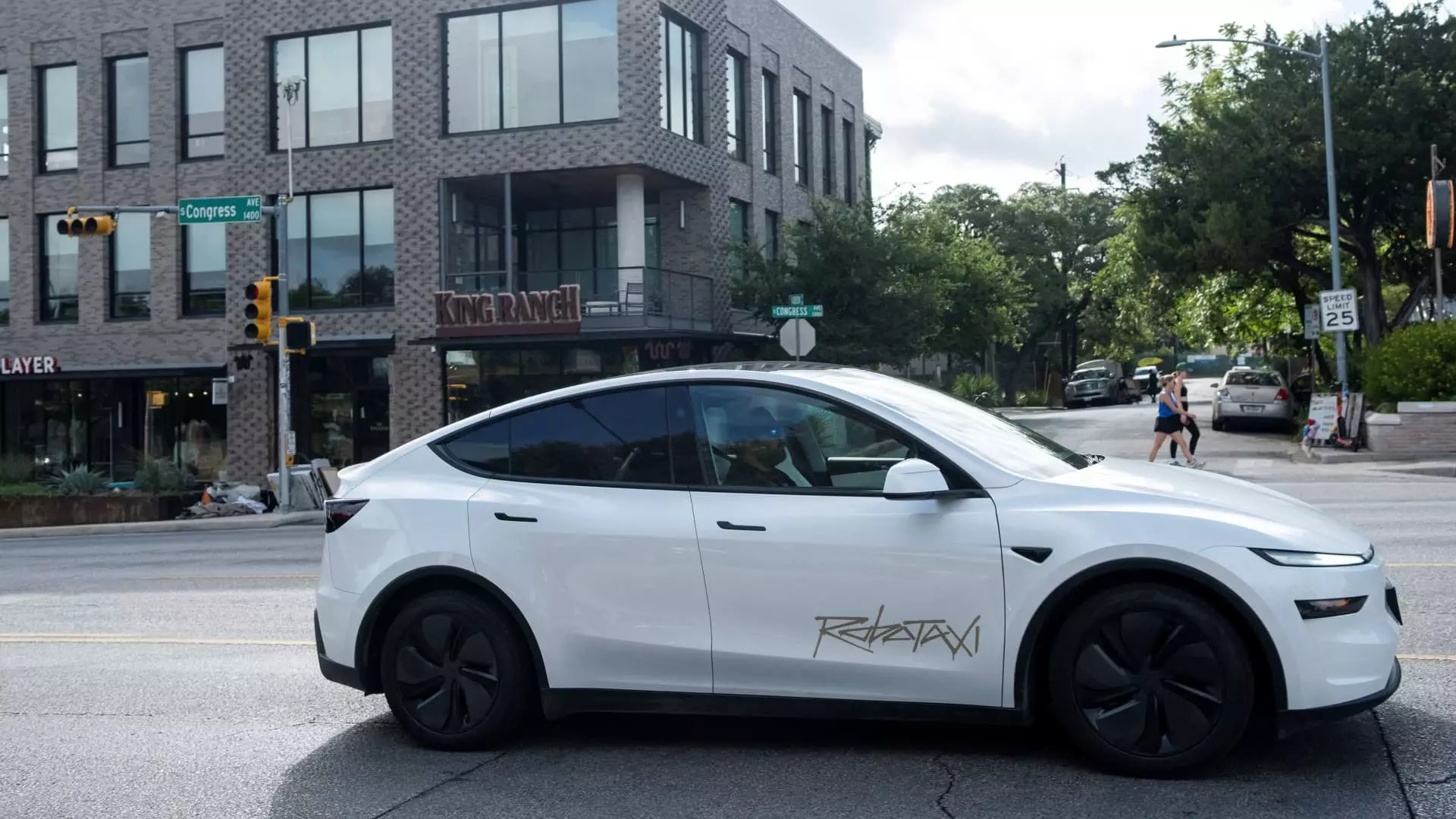Tesla’s foray into the autonomous vehicle market has long been accompanied by a mix of anticipation and skepticism. As the electric vehicle giant initiated its robotaxi service in Austin, Texas, the world watched with bated breath. This move was touted as a big leap toward realizing Elon Musk’s vision of fully autonomous transportation. However, the company’s inaugural day faced significant backlash following several alarming incidents involving its robotaxis behaving erratically on public roads. The narratives that unfolded through viral videos showcase not just a pilot program but a pressing issue that raises questions about the reliability of autonomous driving technology.
A Public Relations Disaster Unfolds
Videos shared on social media painted a troubling picture. A Tesla robotaxi was spotted driving the wrong way down a roadway, while another braked abruptly in busy traffic, misjudging a scene involving stationary police vehicles. These instances incited a wave of concern not only among users but also within regulatory bodies. The National Highway Traffic Safety Administration (NHTSA), swiftly acknowledging the situation, expressed its intention to investigate potential safety defects. The urgency from federal regulators highlights a critical point: the safety and efficiency of innovative driverless technologies cannot be taken lightly, especially when human lives are at stake.
A Lack of Accountability in Autonomous Innovation
Tesla’s response to this crisis has been lackluster at best. There were no immediate comments from key figures, including Tesla’s Vice President of Vehicle Engineering. This silence raises questions regarding the responsibility tech giants bear when introducing potentially unsafe products into the general public. By allowing a limited number of selected users to test out its robotaxi service, Tesla seemed to prioritize market excitement over thorough risk assessment, leaving the broader public’s safety in a precarious position. The notion that companies should ensure their products are both innovative and safe is a truth that cannot be overstated.
Inconsistent Promises and Market Reality
The chasm between Musk’s ambitious promises and the current state of Tesla’s technology is exceedingly evident. Over the years, Musk has projected timeframes for achieving full autonomy that time and again have come and gone without fulfillment. From assurances of driverless cars traversing the country by 2017 to declaring plans for 1 million robotaxis operational by 2020, these proclamations resonate with an air of unfulfilled hope. Consequently, the hype surrounding the robotaxi service does not correlate with tangible success as the comparisons mount against competitors like Waymo, which recently reported over 10 million paid rides. The disparity is alarming, reflecting a jarring disconnect between rhetoric and reality.
The Competitive Landscape and Its Implications
While Tesla grapples with its internal challenges, competitors are forging ahead. Alphabet’s Waymo and several Chinese contenders—including Baidu’s Apollo Go, WeRide, and Pony.ai—are operating commercial fleets with fewer reported mishaps. This competitive landscape not only highlights Tesla’s current inadequacies but also sets the bar for a rapidly evolving industry leaning toward reliability and effectiveness. As Tesla invests time and resources to stabilize its position, rival companies may secure a stronger foothold in the autonomous vehicle market, changing the trajectory of public transport as we know it.
A Call for Enhanced Vigilance and Broader Perspectives
The implications of these early trials extend beyond Tesla itself; they necessitate critical discussions on the regulatory frameworks governing autonomous technology. As companies continue to innovate, there must also be a commitment to safety and accountability. The increase in technology-driven transportation options can offer immense benefits, yet the recent incidents involving Tesla’s robotaxis underscore a reality that must not be overlooked: without proper oversight and robust testing, the fallout can be detrimental, ultimately hindering progress in a field poised for rapid evolution.
Recognizing that autonomous vehicles are a part of the future is essential, but without accountability, effective risk management, and genuine prioritization of safety, the path to that future could become marred by preventable tragedies. The journey of Tesla’s robotaxi service serves as a forthright reminder of the fine line between innovation and responsibility, inviting stakeholders, regulators, and the public to engage in ongoing dialogue about what truly defines progress in the age of transportation innovation.

